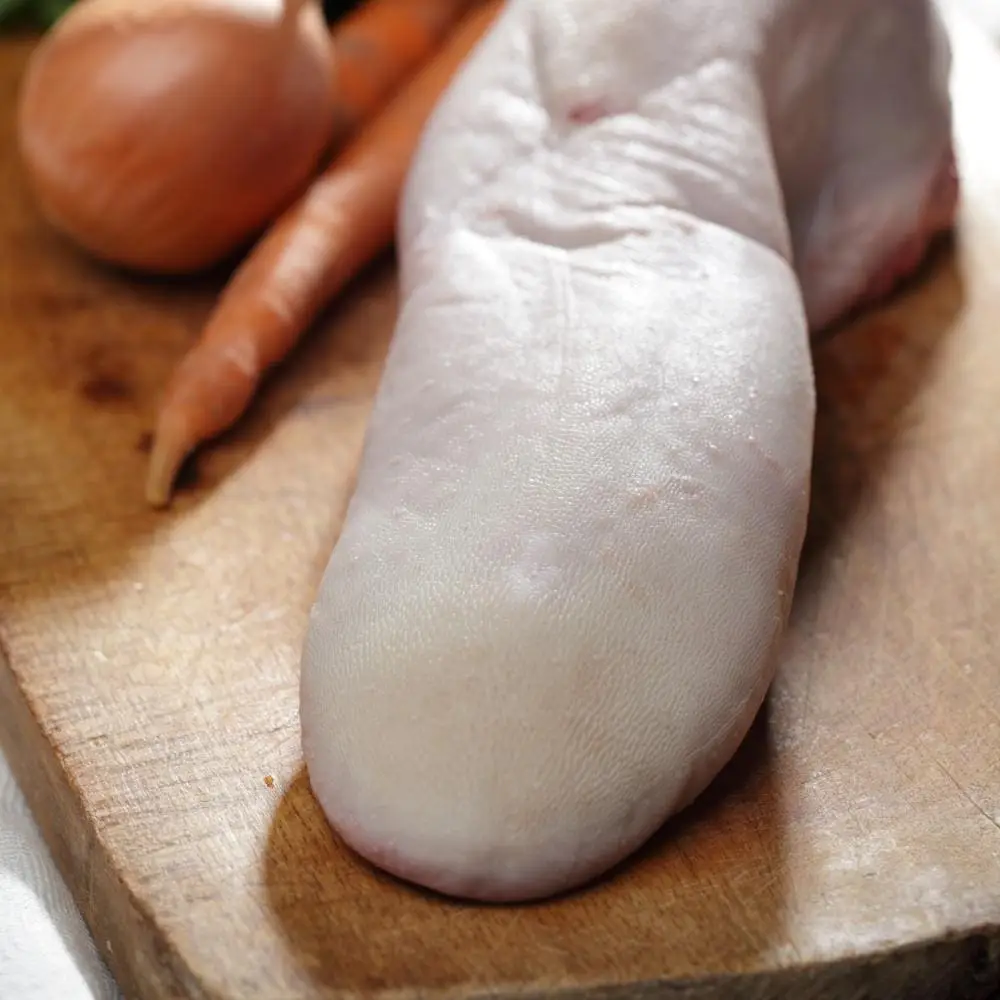So everyone knows that cows eat grass. We all learned that in our preschool coloring books or nursery rhymes. And for most of us, that’s probably about as far as we’ve thought about it.
But do you know how cows eat grass? I mean, how it actually goes from a leafy stalk in the pasture and ends up in their mouths? Probably not.
I captured some slow motion video of our farm’s cattle grazing grass. At normal speeds they eat so quickly it is nearly impossible to see what’s actually going on. Let’s slow it down and take a look.
But first let’s make sure we know something about the mouth of a cow.
Grass Fed Dentistry
Here’s an important thing to know first about cows and many other grazing mammals: they don’t have upper front teeth. This is true for cows, sheep, goats, camels, and most of the other herbivore grazers. Horses and rabbits are a few of the notable exceptions. But the majority of large grazing animals only have lower front incisors, with a bald gum line across the top.
Without those teeth, cattle aren’t really nibblers. They can’t easily graze a plant by cleanly snipping off bits. Instead they have a different eating strategy. When grazing fresh, high moisture grasses, cattle can easily eat over a hundred pounds of it each day, so obviously they manage quite well without all those teeth.
It’s All About the Tongue
While cows can graze by clamping leaves between their lower incisors and their upper gum and then tearing with a twist of the neck, that’s not their preferred method and they aren’t especially efficient at eating that way. When given a pasture with a strong stand of grass, cows actually do most of their grazing with their tongues. Their tongues are their primary grazing tool.
Look at this outtake video (full video at the end of this post) to see how this steer is using his tongue to hook around the grass and drag it into his mouth. Watch carefully; even filmed in slow motion it is hard to catch:
As cattle graze their way across a field, you’ll notice their tongues shooting out in a scything motion and hauling grass back in. Most often they alternate directions, alternately swiping the tongue left and right. The tongue is so strong and nimble that it wraps around a clump of grass, tears it off and conveys it into the mouth.

Looking closely at the tongue, we see the rough surface. Cow tongues have an extremely grippy texture, almost like those sandpaper treads installed on slippery stairways. The tongue is covered in papillae, the bumps and ridges that do all the gripping. Unlike human tongues where the papillae are soft and more involved in taste reception, for cattle many of their papillae are hardened by being keratinized. That is, they are armored in keratin, the same protein that makes up their horns and hooves.
Considering all the work a cow’s tongue is doing, reaching out and tearing off a hundred or more pounds of plants every day, it makes sense that their tongues would need some keratin armoring. This is especially the case because some grasses have sharp blades (maybe you’ve experienced getting a cut from tall grass). And at certain times of the year when the plants are high in nutrients, they’ll voluntarily graze their way through spiny and thorny plants such as thistles.
And if we were to try to lick our way across a pasture? We’d have swollen, bleeding tongues within a few minutes. But it suits a cow’s tongue just fine.
Grass Fed Amazing
The next time you see a cow grazing in deep grass, or the next time you braise a beef tongue (tacos de lengua, can’t beat them), consider what an amazing organ this is. There’s always room for amazement!

4 thoughts on “You Might Be Surprised Learning Just How Cows Eat Grass: Slow Motion Footage”
Wow, this was great, thank you! I have a somewhat similar question regarding cows eating that I can’t seem to find the answer to anywhere.. if a cow eats hay and grass, swallows it, then regurgitates to chew the “cud” where in the world does the “crunching” sound come from?
That one stumps me for sure. If you’ve ever had the chance to look at the rumen contents, they feel like wet lawn clippings. Thus the crunching sound can’t be coming from any hard or crackly material. So it must be some sound effect amplified by the oral cavity and generated by the shape of the teeth, the movement of the tongue, the shearing of the grass, the introduction of saliva, or something like that. But I don’t know which of those are responsible for the crunch.
So good to learn and see and appreciate. So many everyday wonders in this world. How did I never think to inquire about this in 70 years. But so glad you gave me the answer and showed the video.
Thanks Lynne, it was an fun project to film the cattle eating up close to really see what was happening.
Dave